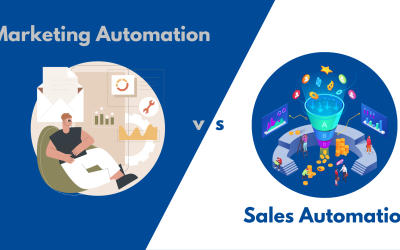Process of Sales Automation:
Being successful in the fast-paced business world of today requires efficiency and effectiveness across the board for your company. Sales is one area where this is very important. For firms looking to streamline their sales processes, enhance productivity, and ultimately raise revenue, sales automation has emerged as a powerful instrument. The process of sales automation will be thoroughly examined in this article, along with its advantages and crucial measures for its implementation.
Understanding Sales Automation
The practice of automating repetitive and time-consuming processes in the sales process is known as sales automation. This enables sales teams to concentrate more on building client relationships, completing transactions, and generating income. Typically, the sales automation process consists of the following crucial steps:
1. Clarify your sales processes
You must precisely describe your sales processes before you can automate them. Starting with lead generation and ending with post-sale assistance, sketch out the full customer experience. Determine the precise duties and procedures required at each phase.
2. Select the Appropriate Sales Automation Tools
Once your sales processes have been described, it’s time to choose the best sales automation technologies. There are several software alternatives available, ranging from email marketing platforms to sales analytics tools and customer relationship management (CRM) systems. Select tools that fit your unique requirements and goals.
3. Compatibility with the Current System
A smooth integration between your selected sales automation technologies and your current systems, such as your CRM, marketing software, and data analytics tools, is essential. Integration creates a more effective sales environment by streamlining data flow and removing duplication of work.
4. Data Management and Segmentation
Data that is clear and organized is essential for efficient sales automation. Implement data management procedures to guarantee accurate and current lead and customer information. To customize your sales strategy, divide your audience into several groups depending on factors like behavior, purchase history, and demography.
5. Lead Generation and Nurturing
Automate lead generation using techniques like social media campaigns, email marketing, and online forms. After leads are acquired, build up automatic lead nurturing workflows that engage prospects and give pertinent information until they are ready to buy.
6. Sales Team Support
Give the sales team the knowledge and skills they need to make the most of automation technologies. Give them the freedom to concentrate on high-value tasks like relationship development and consultative selling.
7. Automated Sales Communications
Send personalized emails, follow-ups, and notifications to prospects and customers to automate contact. Use virtual assistants and chatbots to handle common questions like appointment scheduling.
8. Sales Reporting and Analytics
Use data analytics to your advantage to learn more about your sales success. Keep track of important data including conversion rates, lead source efficiency, and the development of the sales funnel. Apply this information to continually improve your sales methods.
9. Customer Retention and Upselling
Sales automation helps businesses maintain and expand their current customer base as well as attract new ones. Automate the procedures for gathering customer feedback, managing support tickets, and taking advantage of upselling possibilities.
10. Continuous Improvement
Review and improve your automated sales procedures regularly. Long-term success depends on remaining flexible and responsive as both technology and client preferences change.
Does Your Business Need Sales Automation?
Solutions like sales automation software make selling easier as B2B sales get more complicated. Some business owners may now think it’s nothing more than a trend, but when technology boosts work performance and productivity, it has staying power.
Programs for sales automation increase output and revenue. Sales automation has been demonstrated to increase productivity by 10-15% and increase revenue for organizations by the same percentage.
Sales representatives still need to be employed. Instead, your salespeople complete more transactions more quickly with the help of sales automation solutions. Only 25% of organizations have automated their sales operations, despite these clear benefits. Or, to put it another way, it shows that 75% of companies waste time.
Wrapping It Up:
Sales automation is a powerful tool that may transform your sales operations, increasing productivity and income. However, careful design, integration, and continual optimization are necessary for a successful installation. Your company may streamline its sales efforts, enhance client connections, and eventually experience more success in the cut-throat industry by following the methods indicated in this article. Accepting sales automation as a strategic advantage can help your sales force achieve new levels of efficiency and productivity.






